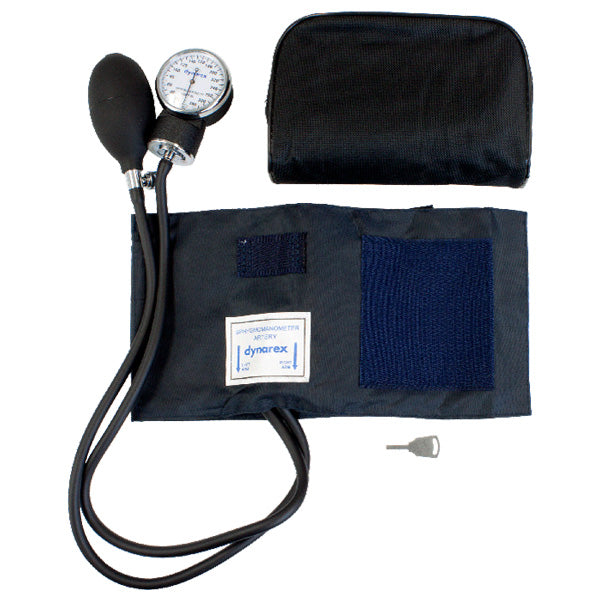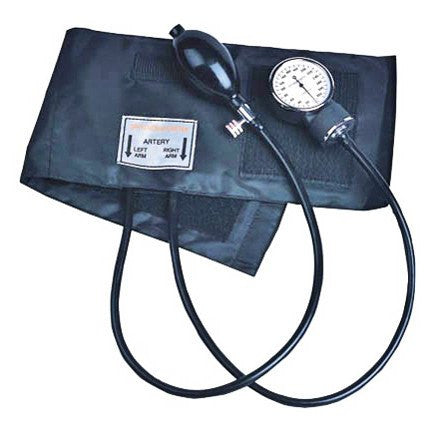Aneroid Sphygmomanometer Blood Pressure Unit
Aneroid sphygmomanometer blood pressure unit is a device used to measure blood pressure. It consists of an inflatable cuff that is applied to the upper arm and a pressure gauge that displays the pressure reading. The pressure gauge is connected to a pump to inflate the cuff and release the air.
The term "aneroid" refers to the mechanism used in the pressure gauge, which contains a small dial that moves in response to the pressure in the cuff. This movement is then translated into a numerical value that represents the systolic and diastolic blood pressure readings.
Aneroid sphygmomanometers are commonly used in medical settings and at home to monitor blood pressure. They are generally considered more accurate and reliable compared to other types of blood pressure monitoring devices.
Aneroid sphygmomanometer blood pressure gauge with adjustable nylon cuff is a lightweight bp sphyg used to take a patients blood pressure reading for hypertension. Basic Sphygmomanometer with graduated to 300 mmHg with a no-stop pin manometer. Calibrated blue nylon cuff with hook and loop closure.
- Child Cuff, Arm Range: 18.4 to 26.7cm
- Adult Cuff, Arm Range 23 to 33 cm
- Large Adult Cuff, Arm Range: 34.3 to 50.8cm
- Thigh or Bariatric Cuff, Accommodates a arm or leg with the circumference between 45-52cm (17" to 30")
How to Control Common Variables Affecting Blood Pressure Measurement
Avoid talking for 30 seconds prior to measurement and for the entire time during the measurement. Avoid exercising, smoking, eating and drinking caffeinated beverages for at least 30 minutes prior to the measurement. -Take the measurement when the body is at a comfortable temperature. Avoid taking a measurement immediately after a hot bath or shower or in a room that is too cold. Avoid contracting the cuffed arm muscles during measurement. A table will provide good arm support and help keep the muscles in the cuffed arm relaxed. Position the cuffed arm at heart level before taking a measurement by resting the cuffed arm on a table or other sturdy surface. Patient should sit with feet flat on the floor and legs uncrossed when taking a measurement. Make sure the cuff fits snugly but not too tight. Inflate the cuff to approximately 40 mmHg over the normal systolic pressure. Avoid over-inflating the cuff. Be aware that anti-depressants, sympathomimetics and blood pressure medications can affect measurement results.



